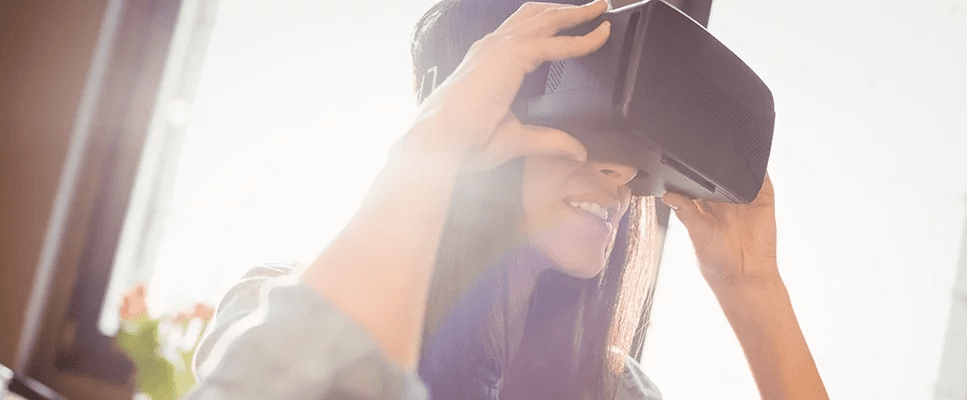As we enter the new year, we are poised to see some of the most innovative and revolutionary changes from the technology sector yet. With businesses making rapid innovations, it’s important for your company to be cognizant of how to take advantage of these technology advances. Here are three IT trends that can enhance your company’s performance in the next year:
1. Artificial Intelligence (AI)
The market for Artificial Intelligence is expected to grow to $16.06 billion by 2022, representing a Compound Annual Growth Rate (CAGR) of 62.9% from 2016 to 2022.[1] Applications based on AI have already made their way to the healthcare, transportation, educational, and entertainment industries, and are expected to penetrate a growing number of other industries. Current popular use cases of AI include:

As AI gains momentum, enterprise IT leaders would be well served to evaluate AI use cases to improve end user support. Business leaders are constantly challenged with reevaluating their customer service processes and technology to see if there is room for improvement, especially in Remote Help Desks and Contact Centers. To be competitive in today’s market, businesses must deliver an exceptional end-to-end customer experience. That means providing superior support throughout every stage of the customer journey.
AI introduces the potential for predictive behavior by tracking the caller’s past issues and history prior to making a diagnosis. This capability can enable businesses to deliver better customer service by fixing ongoing problems, determining the root cause of an issue, and reducing time spent getting up to speed with customers. With the ability to harness natural language processing, AI apps such as ChatBots and automation not only redirect your calls, but have machine-learning mechanisms to diagnose and troubleshoot even the most advanced issues – potentially without constant human intervention.
2. Virtual Reality
The continued rise of globalization coupled with the millennial workforce has created a demand for the opportunity to work remotely. Currently, 3.7 million employees work from home 50 percent of the time, a number that has grown by 103 percent since 2005.[2] Imagine a future when everyone is working remotely. How will this impact your company beyond just the tools and applications it currently uses? Accommodating a remote working model poses new challenges for the people, processes, and technology behind traditional IT service delivery – Will your employees require a 24/7 global support plan? What level of flexibility will your business need for delivering assets? Are you prepared to invest in automation tools and secure self-service solutions? The rising trend of the remote workplace demands a comprehensive internal IT support model to ensure strong communication and culture among team members.[3]
Cutting-edge technologies like Virtual Reality (VR) have the potential to increase in the workforce in 2017. Businesses that have not already adapted to remote working may argue that existing collaboration technologies such as Skype or WebEx cannot match the immersive experience of an in-person interaction. Yet, as VR technology continues to mature, it will enable remote colleagues to be completely immersed in any setting. For IT teams, this can prove incredibly useful for troubleshooting or training purposes. If a technician in a remote location needs to be trained on how to use a specific technology, VR can give that employee the capability to enter and assess the situation up close and from multiple viewpoints. Hence, the potential for VR to improve IT service delivery for remote working models is well within reach for businesses.
3. Cybersecurity Awareness
An unprecedented number of cyberattacks plagued both businesses and consumers in 2016, the most significant of which involved Dyn and Yahoo. A total of 980 data breaches were accounted for in 2016, an increase of over 200 versus the prior year.[4] With the ever-increasing frequency of security breaches like these, companies must prepare themselves by constantly refactoring their security plans. So, what should businesses be doing to bolster their cybersecurity for 2017?
As cybersecurity awareness becomes more important, businesses should place more emphasis on increased and improved training on warding off phishing schemes – the leading cause of security breaches over the past year.[5] Common phishing schemes include impersonations of legitimate organizations or executives via fraudulent e-mails or hosted websites that use threats, hacking attempts, or a sense of urgency to trick users into releasing sensitive information. While every business should ensure that its applications, operating systems, and anti-virus, spyware, and malware software are up-to-date, the reality is that most cybersecurity breaches result from human error.[6]
Internal end-user education is often an overlooked method of securing data – yet every employee exchanging sensitive information over email, VPN, or document-sharing must be viewed as a potential vulnerability. As part of every business’ security program, employees should be advised to:
- Implement two-step verification for all logins
- Inspect URLs when redirected to a website
- Be aware of typos or grammatical errors
- Avoid authorizing financial transactions via email
- Refrain from publishing personal information on social media
As phishing schemes become more adept at targeting end-users, internal education will become a major priority for enterprises looking to bolster their cybersecurity in 2017.
Is Your Business Prepared?
In order to capitalize on these trends, businesses need advanced IT support from specialized or highly skilled employees. Thus, as your business evaluates its strategy and processes going into 2017, it’s crucial to consider whether or not you have the capability to accommodate new technologies. Can your IT team automate using AI software, develop an innovative, global model to support a remote workforce, or leverage new cybersecurity awareness programs? If not, then what gaps can you identify, and how can your business close them?
According to Computerworld’s Forecast 2017 survey, 61% of rising employment in the IT industry will be driven by the need to accommodate new systems and projects.[7] This indicates that many companies are focused on investing in resources that can help them leverage the latest technologies. By creating employee roles focused exclusively on innovation or outsourcing for specialized IT talent, priming your organization’s skill set to support the above trends can position your business for greater success in 2017. To learn more about relevant issues in the IT industry, read our post on the Five Challenges that IT Leaders Face.
[1] Artificial Intelligence Market worth 16.06 Billion USD by 2022
[2] Latest Telecommuting Statistics
[3] Why Remote Work Thrives in Some Companies and Fails in Others
[4] 2016 Data Breach Category Summary
[5] BakerHostetler LLP, 2016 Data Security Incident Response Report
[6] Ibid.
[7] 10 hottest tech skills for 2017



